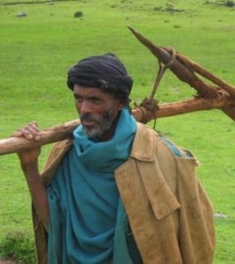Improved Farming Practices
Post-doc research project by Melesse Temesgen
contact: Melesse_tem@yahoo.com
Adoption of improved land management practices by farmers has been very low in high rainfall areas with steep slopes. Some of the reasons for the low adoption are the breakdown of soil conservation structures due to excessive surface runoff, the loss of crop land, and difficulties in undertaking traditional cross plowing in the presence of conservation structures.
Improved tillage systems that reduce surface runoff and that allow farmers to avoid cross plowing might improve effectiveness and adoption of soil conservation structures. Improved tillage systems can also enable farmers to widen bund spacing to save crop land. This study will evaluate such systems in an integrated way along the slopes of the Choke Mountains.
Studies will be made at the plot scale (< 1 ha) comparing farmers’ practices with integrated application of soil conservation structures and improved tillage techniques. Selected treatments will be compared at micro watershed scales (about 0.5-1 km2). Data to be collected include runoff, sediment, soil moisture, soil physical parameters, agronomic and meteorological data.
